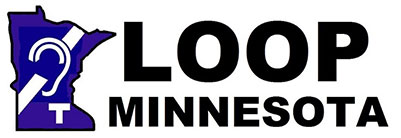Please Note: Bluetooth is NOT able to provide communication to a group of people in a room or
facility at this time. It cannot do what a Loop or other system listed below – provide hearing to a
group of listeners.
Bluetooth Technology and Hearing Loss
Bluetooth is still mostly proprietary or brand-dependent technology. It allows wireless, one-on-one,
short distance connections between different devices that “recognize” each other. In other words, the
devices must be compatible in order to connect. However, additional accessories, such as Bluetooth
adapters and streamers can help bridge connectivity and compatibility issues.
In 2014, Bluetooth became a popular feature in hearing aids. Ever since that time, there is a lot of
confusion about what Bluetooth can and cannot do for those with hearing loss. Although Bluetooth
has its advantages, it will be quite a while before it can replace T-coils and hearing loops for hearing
in noise.
There are basically 2 Bluetooth scenarios.
1. Present Bluetooth Use for hearing instruments
Bluetooth-enabled hearing aids allow for direct, wireless and hands-free connections with compatible
smartphones. They also enable the streaming of music or podcasts from compatible devices, such as
phones, laptops or TVs to the hearing aids. Cochlear implants, earbuds and devices known as
“hearables” are also routinely Bluetooth-enabled.
2. Future Bluetooth Use
The misunderstandings surrounding Bluetooth mostly concern the function that the technology so far
does NOT have. Bluetooth does NOT yet allow for clear sound signals in large, noisy venues, such
as places of worship or lecture rooms and halls. The only technology that helps people understand
speech-in-noise in such places is the assistive listening system of hearing loop & telecoils.
This why many of the newer hearing aids have BOTH Telecoils and standard Bluetooth.
That said, technology advances with Bluetooth L.E (Low Energy) for large-scale broadcasting and
connectivity are underway. However, specialists expect that it will take another 10 to 15 years for this
to become a reality.
The obstacles are numerous. It is not only the technology itself that presents challenges but there are
also proprietary, legal and contractual issues to be resolved as this is a worldwide effort.
Even then, Bluetooth will coexist with hearing loops & telecoils for quite some time as people
transition to the reworked Bluetooth LE hearing instruments.
